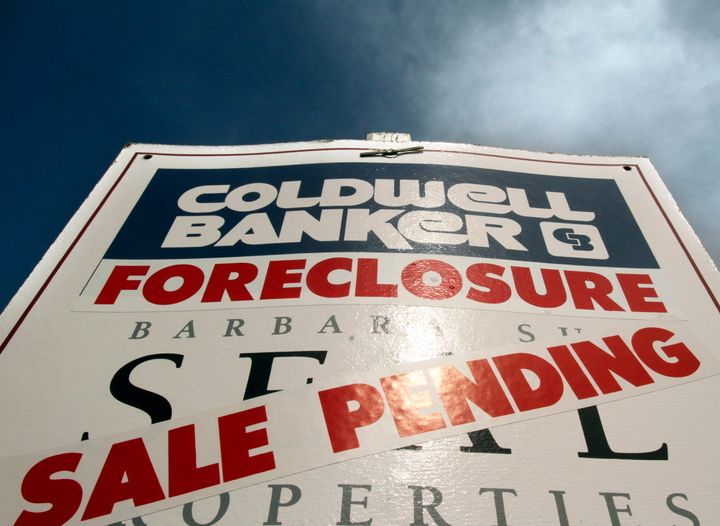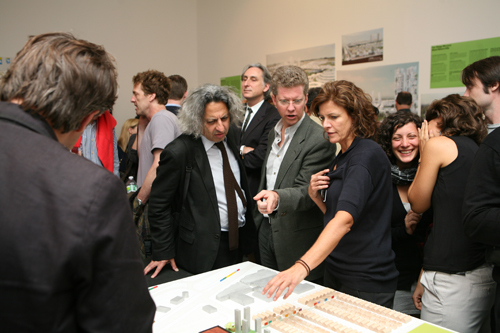
Foreclosed: Rehousing the American Dream recently opened at the Museum of Modern Art, featuring new housing design proposals for five suburban sites across the country. But if you spend too much time staring at the show's fancy architectural models or sleek renderings, you may miss the curators' point. The physical exhibition and even its title are "decoys" at the center of a series of open workshops and symposia, designed to provoke public discussion on the future of housing in the United States. As MoMA curator Barry Bergdoll put it, "Gone is the idea of an exhibition that opens and closes in the galleries."
Co-organized by Columbia University's Temple Hoyne Buell Center for the Study of American Architecture, whose Buell Hypothesis launched the show, Foreclosed is the newest in a long line of MoMA shows that put the museum in the middle of national housing debates. U.S. Secretary of Housing and Urban Development Shaun Donovan gave the keynote address at a public Foreclosed event last fall at MoMA PS1, calling for a rethinking of "our models, not only of home ownership but of our neighborhoods and our broader settlement patterns," in the wake of the foreclosure crisis. The Foreclosed organizers invited Secretary Donovan "not so much to influence policy directly," according to Buell Center Director Reinhold Martin, "but to open up a national conversation about the values and priorities underpinning longstanding policies. The goal was to offer a different sort of forum, in which fundamental questions could be asked that are as much cultural as they are economic, technical, or policy-based." In an earlier era, the connection between the museum's exhibitions and housing policy was more direct: Catherine Bauer, a key contributor to MoMA's first architectural shows in the early 1930s, co-authored the Housing Act of 1937, and then continued to collaborate on MoMA housing exhibitions from her position within the newly created United States Housing Authority, the predecessor to HUD.
Site studies by Foreclosed's five interdisciplinary teams -- led by the principals of the architecture firms MOS, Visible Weather, Studio Gang Architects, WORKac, and Zago Architecture -- make clear that today's American suburbs no longer resemble homogeneous, white-picket-fence clichés, but are instead economically and socially diverse settlements made vulnerable by their reliance on the private automobile. University of Michigan professor of architecture and urban planning Robert Fishman noted in a February 18 Foreclosed forum at Columbia University, "The foreclosure crisis is based on a misconception of risk, the thought that you can't lose money building sprawl." All five Foreclosed teams increased their sites' housing density while redesigning their public spaces. When residents in Keizer, OR warmly received WORKac's proposal for the city, firm principal Dan Wood attributed their positive reaction to the fact that "people in Keizer are sick of driving everywhere."
As the architectural critic Ada Louise Huxtable wrote, "The exhibition marks the return of the museum to an activist position." Huxtable was writing 39 years ago, on the occasion of MoMA's most recent show on housing, 1973's Another Chance for Housing: Low-Rise Alternatives. With further discussions planned to connect Foreclosed with current New York City-based housing initiatives, the activist potential for MoMA remains.
U.S. Secretary of Housing and Urban Development Shaun Donovan discussing Studio Gang's proposal with Jeanne Gang at the Foreclosed September 17, 2011 Open Studios at MoMA PS1. Photograph by Brett W. Messenger. © 2011 The Museum of Modern Art
